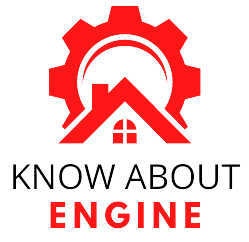Diesel engines are versatile. The engineers or marine engine manufacturers use them for multiple applications in various industries, including marine vessels, industrial machinery, and construction work. However, these engines have a common foundation that meets the particular needs of distinctive technical characteristics and requirements.
In this blog, we will discuss the difference between a marine and an industrial diesel engine. We will be shedding light on their application and dictate their performance and functionality.
Differentiating Engines by Application
You can categorise and understand marine and industrial diesel engines through the lens of their intended application. A diesel engine for marine use is different from the one intended for industrial purposes.
The parts like generators, pumps, power packs, and various industrial machinery contradict each other. Here are some technical discrepancies that differ in applications, approach and provide accuracy for clarity.
Technical Differences Based on Application
Industrial Diesel Engines:
The versatility of industrial diesel engines has multiple functions. It includes locating the generator sets, pump sets, hydro packs, and other applications used for commercial purposes. So, for their specific technical adaptation and versatile nature they are necessary to meet the diverse demands of these applications.
Marine Diesel Engines:
In contrast, marine diesel engines are useful for propulsion units on ships. Their function dominates the special features to guarantee efficient and safe operation at sea.
Cooling System Disparity
1) Marine Diesel Engines: Indirect Cooling by Seawater
Marine engine manufacturers install marine engines with a cooling system that depends on derived cooling through seawater heat – Heat Exchanger. The transfer of heat from the engine water to the seawater is facilitated by a heat exchanger that lowers the engine’s temperature.
2) Industrial Diesel Engines: Radiator-Based Cooling
This engine relies on Radiator-Based Cooling for various applications. Cold air passes through the radiator reducing heat and providing efficient cooling.
Exhaust Systems: Dry vs. Wet
1. Dry Exhaust in Industrial Engines
Dry Exhaust Configuration is a key Industrial engine feature that comes with a “dry exhaust” system. Here the exhaust gases go out directly into the atmosphere. So for non-marine applications, this design simplifies the exhaust management system.
2. Water-cooled exhaust in Marine Engines
Marine engines have a water-cooled exhaust system that minimises radiant heat within the engine room and prevents overheating. This exclusive feature ensures safety and ultimate operation on the water.
Flywheel Housing Specifications
1) SAE Standards for Marine Flywheel Housings
Marine diesel engines require a flywheel housing that meets the SAE (Society of Automotive Engineers) standards of marine engine manufacturers. This housing ensures compatibility and flexibility with the gearbox and circulates the transmission systems often used in marine vessels.
2) Tailored Flywheel Housings in Industrial Engines
Industrial engines often feature flywheel housings that benefit specific industrial applications with customisation enhancements. It provides flexibility that connects various gearboxes and drives.
Difference in Speed Operations
1. Marine Engines: Operating at 1800 RPM
The propeller synchronisation of marine engines operates at around 1800 RPM by combining the gearbox mechanisms. With precise control over the propeller’s speed, it offers efficient propulsion of the vessel.
2. Higher Speeds in Industrial Engines (Above 2000 RPM)
Industrial Efficiency Requirements may exceed 2000 RPM. These speeds meet the performance demands of industrial machinery and processes.
Bottom Line
Understanding diesel engines of marine or commercial industries goes beyond utilising their common internal combustion principles. However, the choice of application transmits the technical features and specifications of these engines. Therefore, if you want to explore the full potential of diesel engines and learn the technical differences between them, it’s better to discuss them with marine engine manufacturers or professional experts. They will provide you with the information and support you need to make informed decisions about these versatile power units of marine and industrial engines.
Also you can see this blog: Top 5 Leading Marine Engine Manufacturers in India


Leave a comment